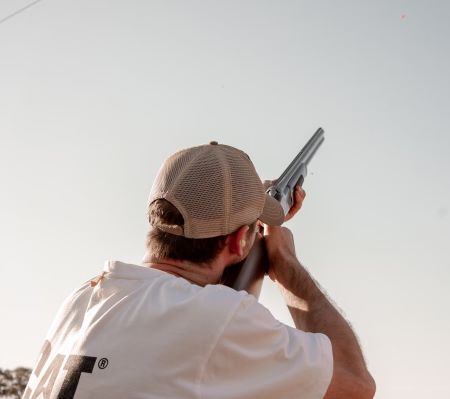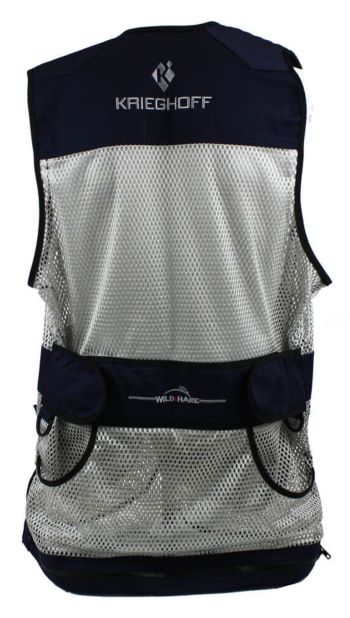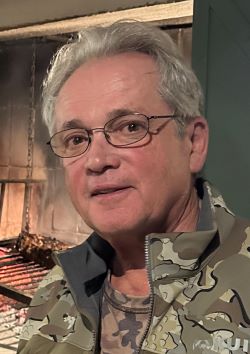Precautions for Clay Target Shooting in Extreme Heat and Humidity
As an avid clays shooter, I enjoy spending summer days on the shooting course with my friends. Recently, the increasing heat waves and alarming rise of heat strokes reported at outdoor sporting events or religious gatherings have made us all more aware of potential heat-related health risks. This prompted me to look for ways to optimize safety and performance when clay shooting in extreme heat and humidity.

Hot days, shooting clays under a cloudless, summer sky can pose risks related to heat-induced illness.
Extreme heat is a period of high heat and humidity with temperatures above 900 F for at least 2-3 days. It can pose significant stress on our bodies, particularly for those over age 65, with chronic health problems (obesity, diabetes, cardiovascular disease), or those taking certain medications (like beta-blockers, diuretics) or consuming excessive alcohol, and can lead to severe dehydration, altered mental status and even death.
All living organisms attempt to maintain homeostasis or a state of balanced equilibrium. The human body does this remarkably well by using sweating as a mechanism to thermo-regulate and maintain a core temperature of 97°F to 99°F. When ambient temperature rises above skin temperature, we begin to sweat, and as the sweat evaporates off the skin, it dissipates heat, allowing the body to cool down. During strenuous exercise, we can sweat up to 2.5-3 liters per hour, resulting in significant heat loss. When atmospheric moisture content (i.e., relative humidity) is high, however, sweat cannot evaporate, so our temperature stays high and we feel hot and uncomfortable. If the body temperature rises to 100-104 F, we can experience symptoms of heat exhaustion or heat stroke such as headache, dizziness, nausea, vomiting, confusion, slurred speech, seizures and even loss of consciousness.
This is why the heat index (which considers both air temperature and relative humidity) is more indicative of the apparent temperature our bodies feel and how hard they must work to keep us cool. For instance, an ambient temperature of 900 F and a relative humidity of 65% feels like 1030 F (see Heat Index chart). Prolonged exposure or physical activity in a heat index approaching 103 significantly increases the risk of heat exhaustion.

An example of the heat index. (Source: https://www.weather.gov/ama/heatindex)
The heat index is further influenced by wind and direct versus indirect sun exposure. Wind can have a heating or cooling effect, depending on air temperature and relative humidity. At temperatures below 95°F wind has a cooling effect, as conduction and evaporation increase, and heat leaves the skin. Above 95°F, the temperature gradient between air and skin is reversed, and heat flows from the atmosphere into the body. At this temperature, wind acts like a convection oven and paradoxically heats us up. Direct sunlight can raise the heat index even further (by as much as 15-200 F) due to increased amounts of infrared energy compared to indirect sunlight. Dark-colored clothes absorb infrared energy and conduct heat into our body far more than light-colored clothing.

Mesh shooting vests can help you control your body temperature when shooting in the heat.
So what can we do to safely enjoy clay shooting in the summer months? Schedule shooting times early in the morning, when it’s cooler, and take frequent breaks to seek shade or a cool, air-conditioned place to avoid overheating. Stay hydrated before, during, and after shooting. Drink at least 1 cup (8 ounces) of water every 15-20 minutes (roughly 1 liter per hour) and consume drinks with electrolytes to help replenish the salt lost during sweating. Avoid excessive alcohol within 24 hours of being out in extreme heat. Choose the right outfit that includes hats, sunglasses, and breathable, light-colored clothing. Fabrics that are lightweight, moisture-absorbing (such as “quick-dry” blends), and light-colored or transparent will reflect light and keep us cool. Dark fabrics, on the other hand, absorb visible and infrared light, and trap heat.
Finally, don’t rush into it. Exercise good judgment and allow your body to slowly acclimatize to extreme heat and humidity. Gradually increasing the time spent clay shooting over a period 1-2 weeks will allow the body to acclimate. Athletes do this routinely before competitions to build up their heat tolerance – as should we.
Dr. Armand Cognetta is founder of Dermatology Associates Southeast (https://datfl.com) and specializes in skin cancer detection and treatment. He is Fellowship Director for Florida State University College of Medicine Mohs Surgery Program and Chief of Dermatology. He is fortunate to live in close proximity to the best quail hunting habitat in the US. He is a member of Smoke Rise Gun Club in Rosman North Carolina.

Dr. Armand Cognetta is founder of Dermatology Associates Southeast (https://datfl.com) and specializes in skin cancer detection and treatment. He is Fellowship Director for Florida State University College of Medicine Mohs Surgery Program and Chief of Dermatology. He is fortunate to live in close proximity to the best quail hunting habitat in the US. He is a member of Smoke Rise Gun Club in Rosman North Carolina.


Comments